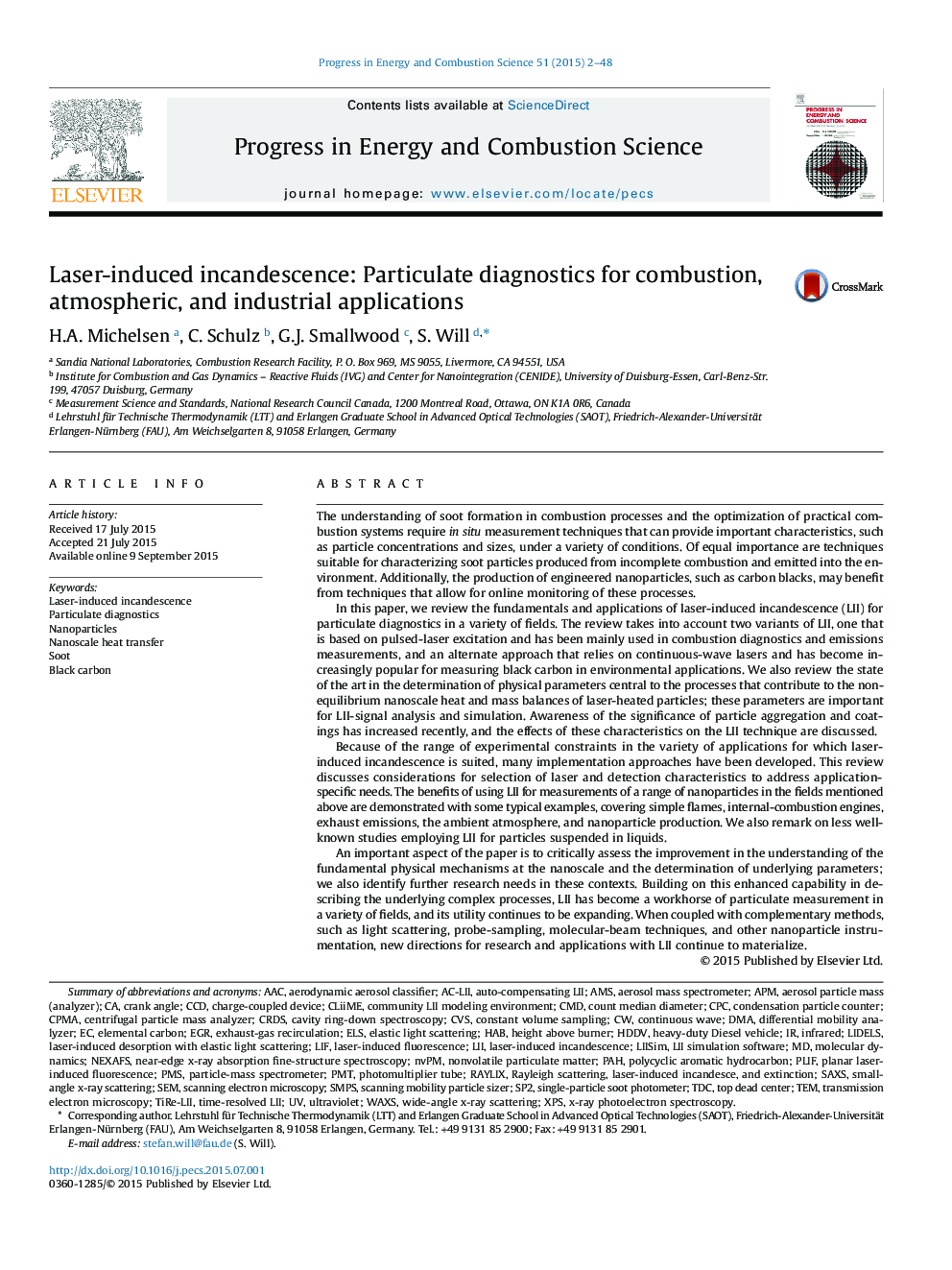| کد مقاله | کد نشریه | سال انتشار | مقاله انگلیسی | نسخه تمام متن |
|---|---|---|---|---|
| 241634 | 466295 | 2015 | 47 صفحه PDF | دانلود رایگان |
The understanding of soot formation in combustion processes and the optimization of practical combustion systems require in situ measurement techniques that can provide important characteristics, such as particle concentrations and sizes, under a variety of conditions. Of equal importance are techniques suitable for characterizing soot particles produced from incomplete combustion and emitted into the environment. Additionally, the production of engineered nanoparticles, such as carbon blacks, may benefit from techniques that allow for online monitoring of these processes.In this paper, we review the fundamentals and applications of laser-induced incandescence (LII) for particulate diagnostics in a variety of fields. The review takes into account two variants of LII, one that is based on pulsed-laser excitation and has been mainly used in combustion diagnostics and emissions measurements, and an alternate approach that relies on continuous-wave lasers and has become increasingly popular for measuring black carbon in environmental applications. We also review the state of the art in the determination of physical parameters central to the processes that contribute to the non-equilibrium nanoscale heat and mass balances of laser-heated particles; these parameters are important for LII-signal analysis and simulation. Awareness of the significance of particle aggregation and coatings has increased recently, and the effects of these characteristics on the LII technique are discussed.Because of the range of experimental constraints in the variety of applications for which laser-induced incandescence is suited, many implementation approaches have been developed. This review discusses considerations for selection of laser and detection characteristics to address application-specific needs. The benefits of using LII for measurements of a range of nanoparticles in the fields mentioned above are demonstrated with some typical examples, covering simple flames, internal-combustion engines, exhaust emissions, the ambient atmosphere, and nanoparticle production. We also remark on less well-known studies employing LII for particles suspended in liquids.An important aspect of the paper is to critically assess the improvement in the understanding of the fundamental physical mechanisms at the nanoscale and the determination of underlying parameters; we also identify further research needs in these contexts. Building on this enhanced capability in describing the underlying complex processes, LII has become a workhorse of particulate measurement in a variety of fields, and its utility continues to be expanding. When coupled with complementary methods, such as light scattering, probe-sampling, molecular-beam techniques, and other nanoparticle instrumentation, new directions for research and applications with LII continue to materialize.
Journal: Progress in Energy and Combustion Science - Volume 51, December 2015, Pages 2–48
